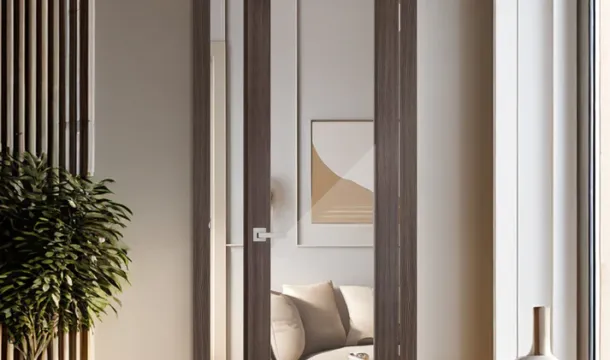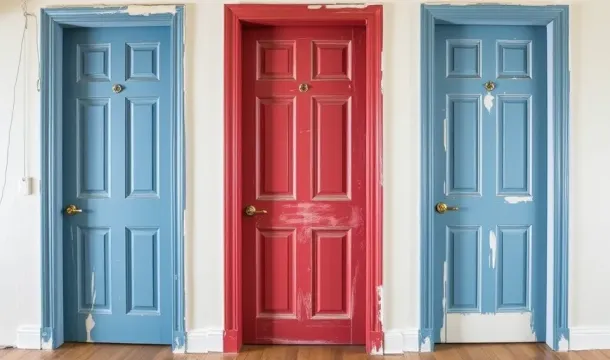Choosing Interior Doors to Improve Home Energy Savings
Popular Articles
- Choosing the Perfect Interior Doors for Your Canadian Home
- A Complete Guide to Choosing Interior Doors for Canadian Homes
- The Challenges of Painting Interior Doors
- Understanding Interior Doors and Their Role in Your Home
- The Perfect Blend of Reliability and Design: Interior Doors with Italian "Sandwich" Technology
Opt for models with high-performance insulation cores such as polyurethane or polystyrene to significantly reduce heat transfer between rooms. Solid core options can achieve up to R-6 insulation value, minimizing temperature fluctuations and lowering heating or cooling demands.
Sealing quality plays a pivotal roleinstall weatherstripping and airtight gaskets around the frame to prevent drafts. Even minimal air leakage through gaps can account for up to 30% of unwanted energy loss in enclosed spaces.
Materials like engineered wood or composite blends balance durability with thermal resistance better than hollow metal variants, which tend to conduct heat rapidly. Consider finishes that incorporate thermal breaks to further limit conductivity and maintain consistent interior climate control.
Selecting Door Materials for Insulation
Solid wood cores offer superior thermal resistance compared to hollow constructions. Species like oak, maple, and mahogany exhibit density levels that reduce heat transfer, helping maintain consistent indoor temperatures. A 1?-inch thick solid wood slab can provide an R-value around 3.5, significantly outperforming hollow alternatives.
Composite materials such as medium-density fiberboard (MDF) combined with insulating foam cores deliver excellent insulation properties while remaining cost-effective. Polyurethane-filled cores typically achieve R-values between 6 and 8, making them a smart choice for minimizing conductive heat loss through the door panel.
Metal vs Non-Metallic Options
Doors incorporating steel or aluminum skins often require additional internal insulation to counteract high thermal conductivity. Without proper core fillers, metal-framed panels allow rapid heat exchange, reducing overall efficiency. Look for models featuring thermal breaks or foam inserts designed specifically to enhance insulation performance.
The Role of Surface Treatments and Sealants
Materials treated with low-emissivity coatings help reflect radiant heat back into the room during colder months and block external heat in summer. Additionally, sealing edges with weatherstripping or specialized gaskets is critical regardless of material choiceproper sealing complements the inherent insulation qualities by preventing drafts and air leakage.
Sealing and Weatherstripping Techniques
Apply high-quality weatherstripping materials such as silicone, rubber, or foam strips around the door frame to eliminate air leaks that compromise insulation performance. Focus on sealing gaps along the perimeter, especially at the bottom edge where drafts are most common.
Install a door sweep with a dense, flexible seal to block airflow under the threshold without hindering smooth operation. Opt for adjustable models that maintain contact with uneven floors over time.
Use airtight gaskets designed for tight compression between the door slab and frame. Compression seals made from EPDM rubber provide durable resistance against moisture and temperature fluctuations while maintaining effective insulation.
Ensure all weatherstripping components fit snugly without excessive pressure causing damage or warping. Test by closing the door to detect any light penetration or sound leaks, then adjust or replace seals accordingly.
Replace worn-out or brittle weatherstripping annually; aging materials lose elasticity and reduce thermal barrier capabilities. Combining multiple sealing layers can further enhance insulation by creating redundant barriers against heat loss and cold infiltration.
Impact of Door Design on Airflow
Doors with solid core construction and minimal gaps significantly reduce unwanted airflow between rooms, enhancing overall insulation performance. Designs featuring tight-fitting frames combined with flush surfaces limit air leakage, maintaining consistent indoor temperatures.
Louvered or slatted styles increase ventilation but can compromise thermal control by allowing drafts. For spaces requiring controlled airflow, consider doors with adjustable vents or built-in grilles that can be closed to optimize insulation when needed.
Role of Door Thickness and Panel Configuration
Thicker doors provide greater resistance to air movement due to increased mass and reduced permeability. Multi-panel designs with recessed sections may create small channels for air passage unless properly sealed at joints.
Flat, uninterrupted panels paired with precision-engineered seals minimize turbulence and pressure differences that drive convective heat loss through door cavities.
Integration with Room Ventilation Systems
In homes utilizing mechanical ventilation, door design influences airflow patterns critical for balanced pressure zones. Incorporating undercut space or transfer grilles in doors facilitates proper air exchange without sacrificing insulation quality.
Strategic placement of these features can prevent excessive infiltration from adjacent areas while supporting efficient HVAC operation.
Popular Articles
- Choosing the Perfect Interior Doors for Your Canadian Home
- A Complete Guide to Choosing Interior Doors for Canadian Homes
- The Challenges of Painting Interior Doors
- Understanding Interior Doors and Their Role in Your Home
- The Perfect Blend of Reliability and Design: Interior Doors with Italian "Sandwich" Technology

Choosing the Perfect Interior Doors for Your Canadian Home

A Complete Guide to Choosing Interior Doors for Canadian Homes
